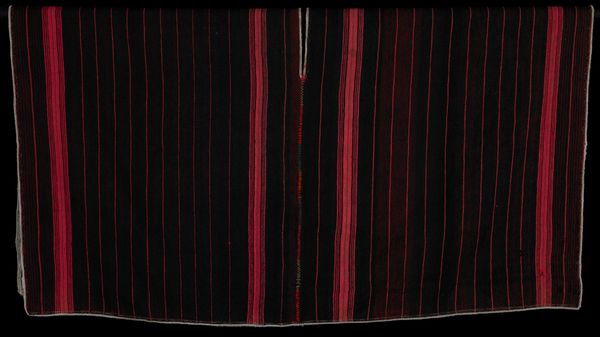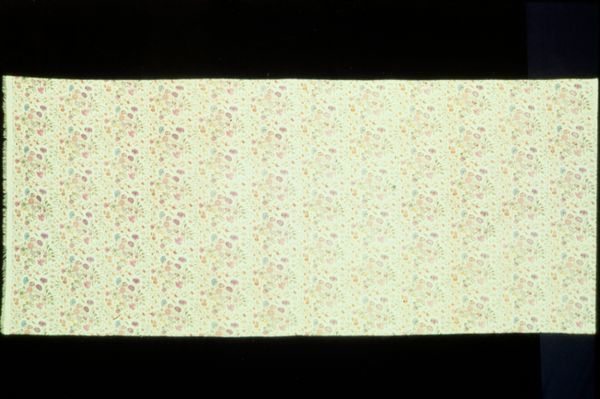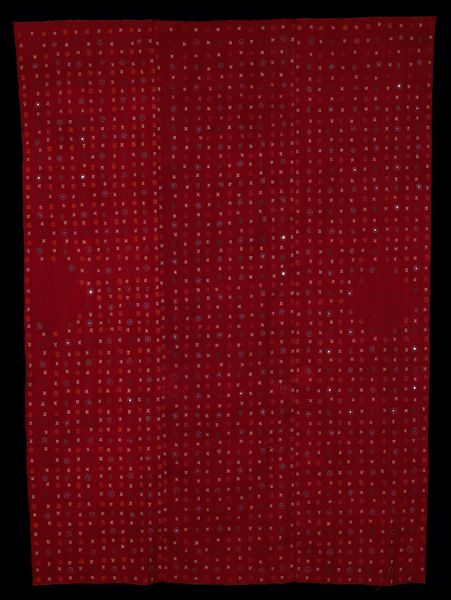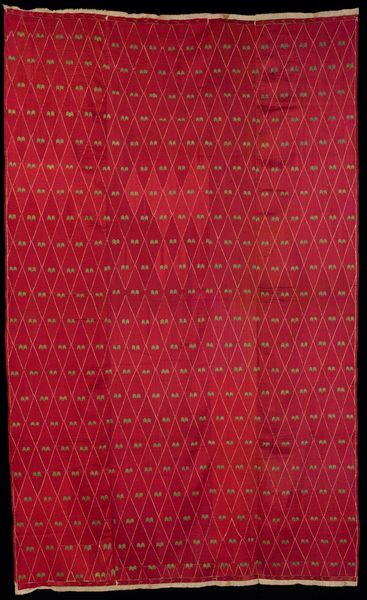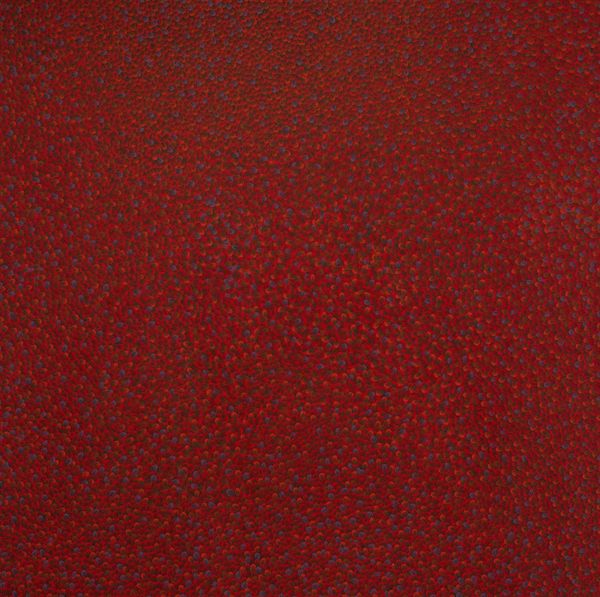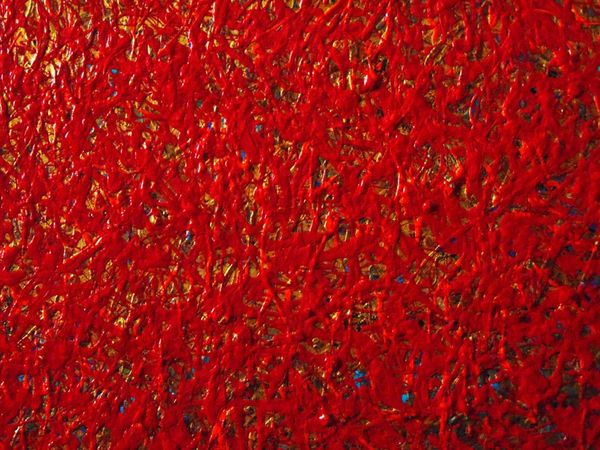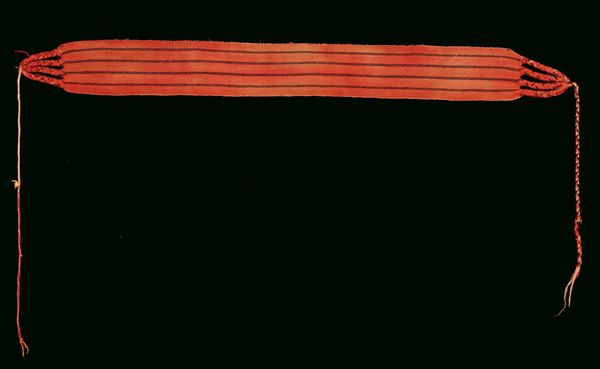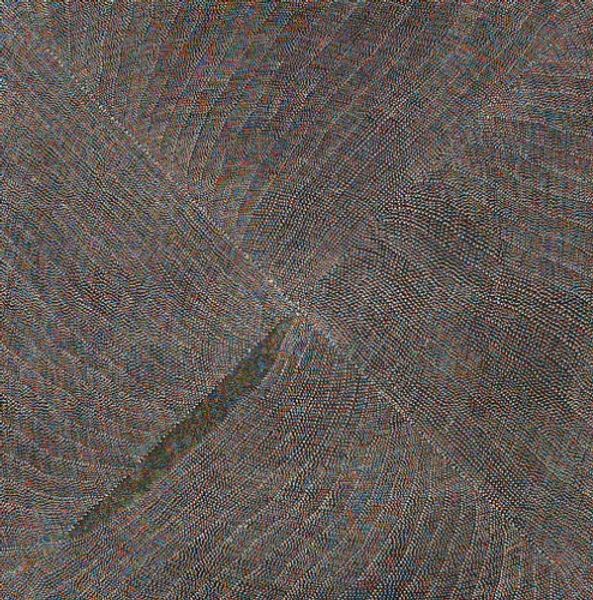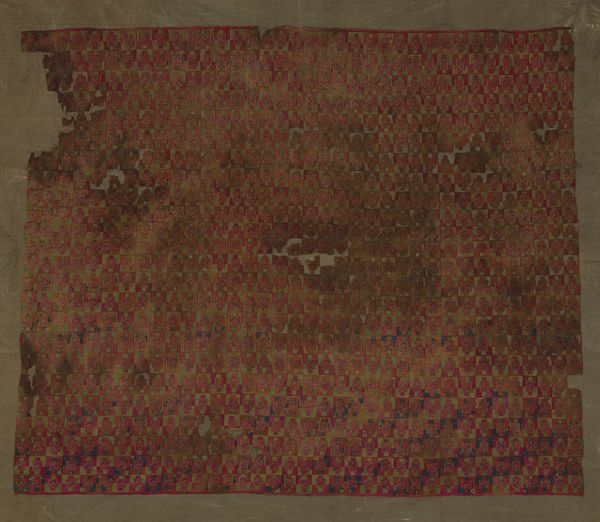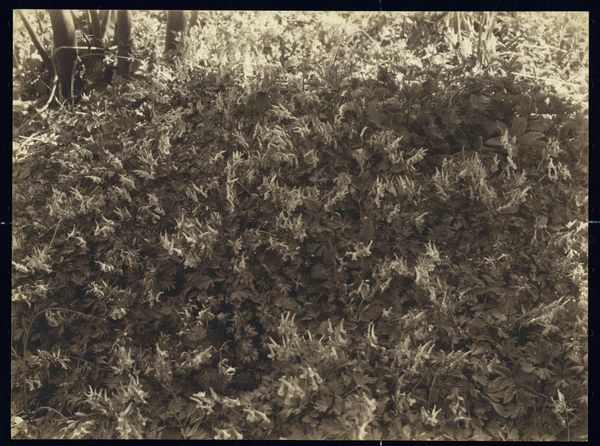
silk, textile, cotton
#
silk
#
textile
#
geometric pattern
#
pattern repetition
#
cotton
Copyright: Public Domain
This is a woman's wedding veil, an Abochhini, made by an anonymous artist. The Abochhini is a type of veil traditionally worn by women in certain communities, particularly in parts of Ethiopia and Eritrea. The striking color and handmade quality speak to the significance of marriage as a social institution, and the important role of women within it. We can look at the patterns, materials, and techniques used in its creation, to try to understand the cultural values and beliefs associated with marriage in the society where it was made. The color red itself holds symbolic weight. Historians might look at anthropological studies, oral histories, and archival documents to provide further insights into the social and cultural context surrounding the veil's creation and use. It’s through such research that we can fully appreciate the veil not just as an object, but as a reflection of the complex social and institutional structures that shaped people’s lives.
Comments
minneapolisinstituteofart almost 2 years ago
⋮
Abochhini (women’s wedding shawl) embroideries were created by women of all faiths (Muslim, Hindu, and Sikh) in the northern Punjab and Sindh regions of the subcontinent, now divided by India and Pakistan. Treasured heirlooms and a source of a woman’s personal wealth, abochhinis were often given along maternal lines at rites of passage, such as marriage and birth. Here, a golden-yellow ground of fine cotton muslin is stitched with a silk thread of red and green, creating a lustrous, all-over pattern of plant and flower motifs. These “garden” patterns were among the most expensive and time-consuming to produce, indicating the status of the wearer and the importance of the occasion. The slight breaks in the pattern are intentional, said to ward off evil spirits.
Join the conversation
Join millions of artists and users on Artera today and experience the ultimate creative platform.
